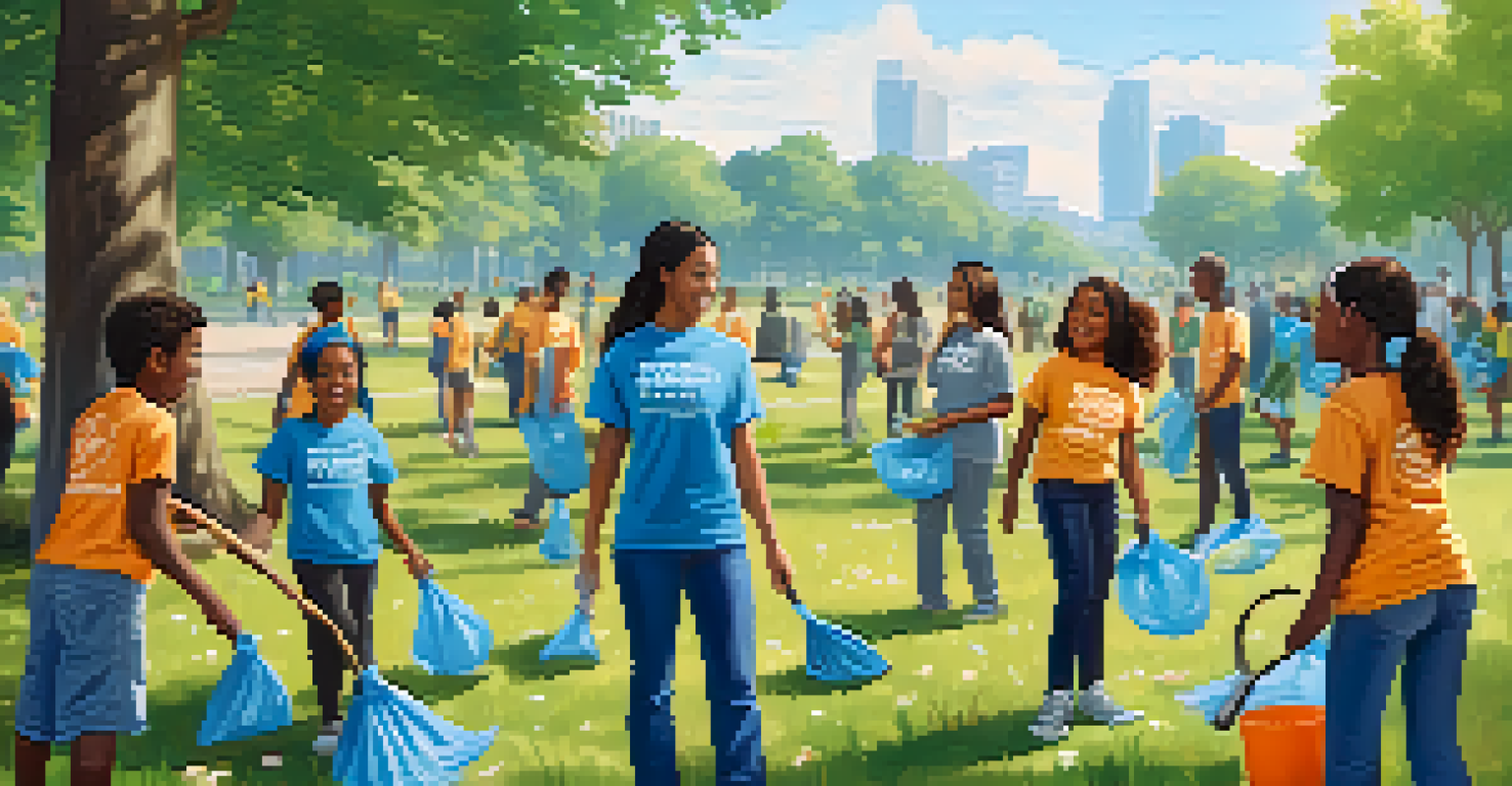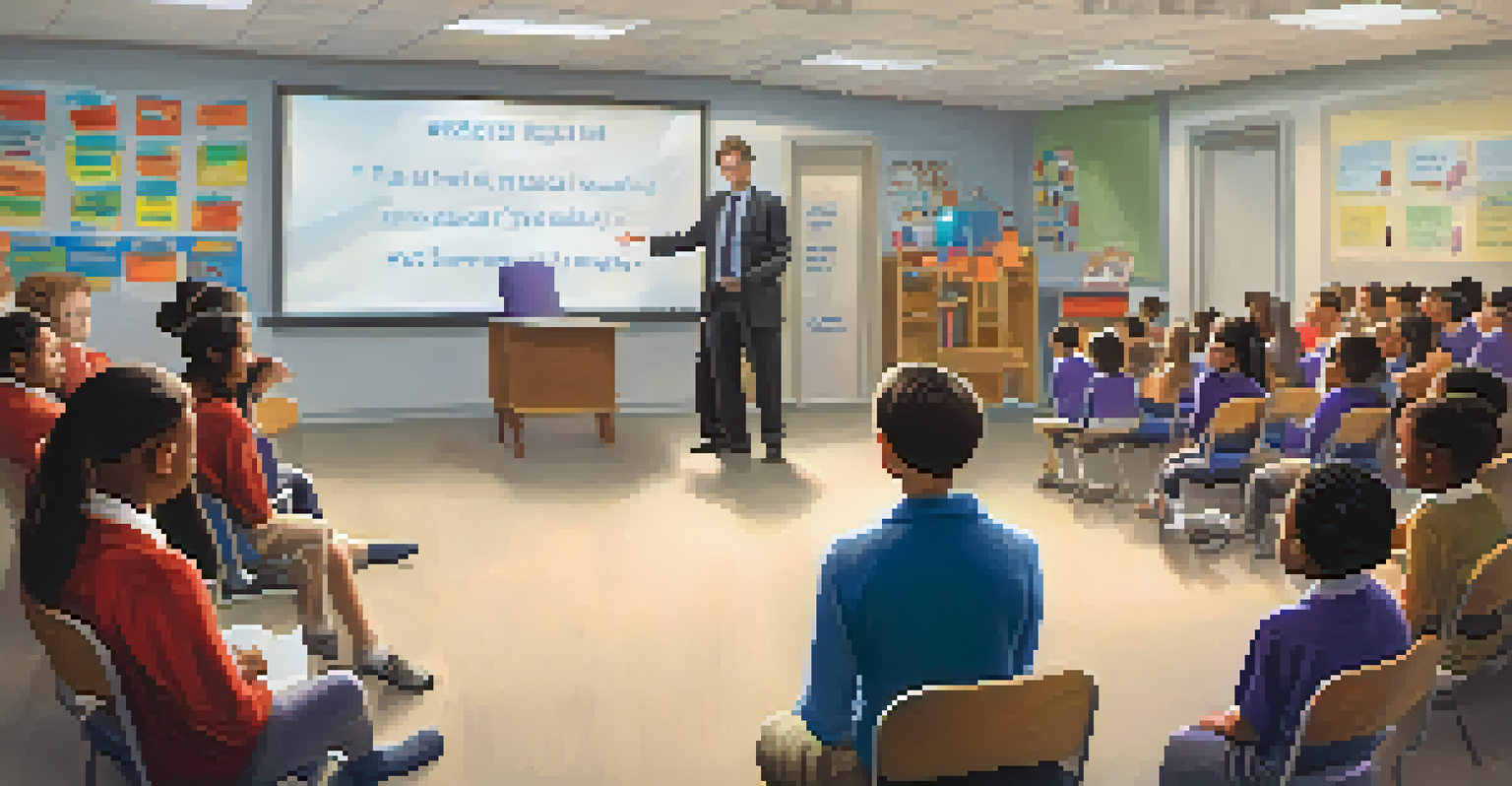Sustainable Education Models: Balancing Innovation and Impact

Understanding Sustainable Education: A Quick Overview
Sustainable education refers to teaching and learning practices that meet the needs of the present without compromising future generations. It emphasizes not just environmental awareness but also social equity and economic viability. Think of it as planting seeds today that will grow into a thriving ecosystem tomorrow—one that nurtures both students and the planet.
Education is the most powerful weapon which you can use to change the world.
At its core, sustainable education integrates various disciplines, encouraging students to think critically about the world around them. It promotes active participation, allowing learners to engage in real-world issues, such as climate change, poverty, and social justice. Imagine a classroom where students are not just passive recipients of information but active contributors to solutions.
In this landscape, educators play a vital role in fostering a mindset of sustainability. They guide students to explore innovative ideas while instilling a sense of responsibility towards their communities and the environment. This holistic approach ensures that education is relevant and impactful, preparing students for the challenges ahead.
The Role of Technology in Sustainable Education
Technology has transformed education in remarkable ways, making it more accessible and engaging. Online platforms and digital tools allow learners to access resources from anywhere, breaking down geographical barriers. For instance, a student in a rural area can connect with experts and peers worldwide, expanding their learning opportunities.

Moreover, technology facilitates innovative teaching methods, such as blended learning and flipped classrooms. These approaches encourage collaboration and critical thinking, enabling students to take charge of their education. Picture a scenario where students watch lectures at home and engage in discussions in class, applying what they've learned in practical ways.
Sustainable Education Empowers Change
Sustainable education equips students with the skills and mindset to address real-world challenges like climate change and social justice.
However, it's essential to balance technology with human interaction. While digital tools enhance learning, the teacher-student relationship remains crucial for fostering a supportive environment. Sustainable education models must integrate technology thoughtfully, ensuring it complements traditional teaching methods to create a rich learning experience.
Project-Based Learning: An Effective Approach
Project-based learning (PBL) is a hands-on educational approach that allows students to explore real-world problems through collaborative projects. This method encourages students to apply their knowledge in practical settings, fostering critical thinking and problem-solving skills. For example, a group project on renewable energy could inspire students to design their solar-powered devices.
The greatest threat to our planet is the belief that someone else will save it.
PBL not only enhances understanding but also promotes teamwork and communication skills. Students learn to work together, share ideas, and navigate challenges, preparing them for future careers. Imagine students presenting their projects to local community members, receiving feedback, and making a tangible impact.
This approach aligns perfectly with sustainable education, as it often involves community engagement and environmental stewardship. When students tackle projects that address local challenges, they develop a sense of ownership and responsibility. Ultimately, project-based learning empowers students to become change-makers in their communities.
Integrating Social Responsibility into Curriculum
Incorporating social responsibility into education is essential for fostering informed and engaged citizens. This integration involves teaching students about ethics, empathy, and the importance of contributing positively to society. Think of it as equipping students with a moral compass that guides their actions in both personal and professional spheres.
By discussing current events, social issues, and community challenges, educators can inspire students to think critically about their roles in the world. For instance, exploring topics like poverty, inequality, and environmental degradation can motivate students to become advocates for change. Imagine a classroom debate where students brainstorm solutions to help their local community thrive.
Technology Enhances Learning Access
Digital tools and online platforms break down barriers, allowing students to engage with global resources and experts in meaningful ways.
Ultimately, integrating social responsibility prepares students to face complex global issues with compassion and insight. It encourages them to consider not just their own success, but the well-being of others, fostering a sense of global citizenship. This dimension is a cornerstone of sustainable education, emphasizing the interconnectedness of all individuals.
The Importance of Community Engagement
Community engagement is a vital component of sustainable education, bridging the gap between classrooms and real-world experiences. By collaborating with local organizations, schools can provide students with opportunities to apply their learning in meaningful ways. For example, students might partner with a nearby environmental group to conduct a cleanup drive, directly contributing to their community.
Engaging with the community enriches the educational experience, making learning more relevant and impactful. Students gain insights from local leaders and experts, broadening their perspectives on various issues. Imagine students attending town hall meetings, learning firsthand about civic responsibility and community governance.
Moreover, fostering strong community ties encourages a sense of belonging and investment in local issues. When students see their efforts making a difference, they develop a sense of agency and motivation to continue engaging with their community. This reciprocal relationship not only benefits students but also strengthens the community as a whole.
Measuring Impact in Sustainable Education Models
Measuring the impact of sustainable education models can be challenging, but it's essential for continuous improvement. Traditional assessment methods often focus solely on grades, overlooking the broader skill sets students develop. By adopting a more holistic approach, educators can evaluate students' critical thinking, collaboration, and problem-solving abilities.
For instance, portfolio assessments allow students to showcase their projects and reflect on their learning journey. This method not only highlights their achievements but also encourages self-assessment and personal growth. Imagine a student presenting a portfolio that demonstrates their understanding of sustainability through various projects and community initiatives.
Community Engagement Enriches Learning
Collaborating with local organizations provides students practical experiences that deepen their understanding and commitment to their communities.
Additionally, feedback from community partners and stakeholders can provide valuable insights into the effectiveness of educational programs. Surveys, interviews, and focus groups can help educators understand how well their initiatives resonate with students and the community. Ultimately, measuring impact ensures that sustainable education models evolve and remain relevant in addressing contemporary challenges.
The Future of Sustainable Education
The future of sustainable education holds incredible potential as more institutions embrace innovative practices. As awareness of global challenges grows, educators are increasingly motivated to equip students with the skills and knowledge necessary to navigate an uncertain world. Think of sustainable education as a compass, guiding learners towards a more equitable and thriving future.
Emerging trends, such as interdisciplinary learning and personalized education, promise to enhance student engagement and retention. By breaking down silos between subjects and tailoring learning experiences to individual needs, educators can create a more dynamic and inclusive environment. Imagine a classroom where students pursue their interests while still addressing key sustainability concepts.

Ultimately, the evolution of sustainable education will depend on collaboration among educators, policymakers, and communities. By working together, they can create a unified vision for the future of education that prioritizes innovation and impact. This collaborative spirit will ensure that every student is empowered to contribute positively to their communities and the planet.